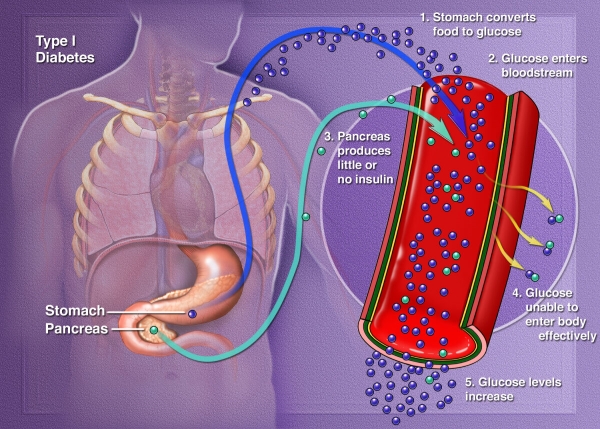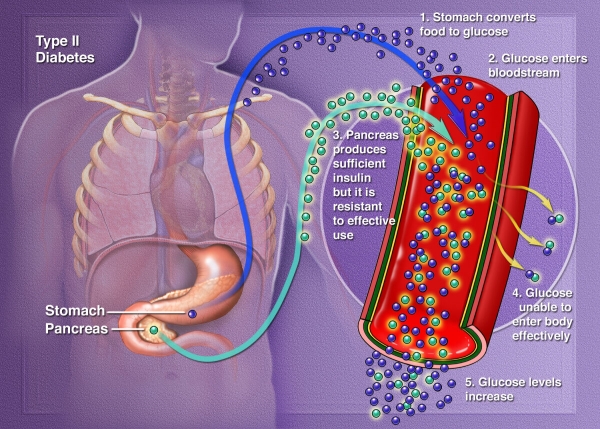Diabetes Facts
What Is Diabetes?
Diabetes is a disease in which the body does not produce or properly use insulin, a hormone that’s needed to turn the sugar and starches people eat into energy. Nearly 40 million Americans — about 11% of the population — have diabetes, and many more are at risk for developing the disease. Source: Centers for Disease Control and Prevention
The Major Types Of Diabetes Are:

- Type 1 diabetes: formerly known as juvenile-onset or insulin-dependent diabetes, in this type the body's own immune system slowly destroys insulin-producing cells in the pancreas.
This can occur at any age. When the loss of insulin-producing cells happens as an adult, it is usually called latent autoimmune diabetes in adults . This slow-growing condition, sometimes referred to as type 1.5 diabetes.

- Type 2 diabetes: formerly known as adult-onset diabetes or insulin-independent diabetes, in this type the insulin does not work effectively and is not enough to keep blood sugar levels normal. Thus the body's cells are unable to properly use sugar.
Types Of Diabetes With Other Causes Include:
- Drug-induced diabetes: There are chemicals that can cause an increase in blood sugar, sometimes leading to type 2 diabetes at a high enough dose over a long enough time.
Medications that raise risk for this condition include some steroids; treatments for high blood pressure including thiazide diuretics and beta blockers; statin, for high cholesterol; and certain antipsychotics. For some patients, diabetes is reversible after they work with their doctors to discontinue the drug causing it. For others, it is permanent. - Cancer and treatment-induced diabetes: Patients with cancer of the pancreas, the organ where insulin is made, are at higher risk for type 2 diabetes. Additionally, treatments such as chemotherapy and blood stem cell transplantation can trigger changes that result in diabetes.
- HIV/AIDS-induced diabetes: HIV/AIDS is another disease that increases risk for type 2 diabetes. It’s important that people with HIV have their blood sugar tested before beginning treatment, as some therapies for the disease can make the risk of developing diabetes even worse.
- Maturity-onset diabetes of the young (MODY): This rare form of diabetes is inherited and can vary in how serious it is. Often, MODY looks like a very mild version of type 1 diabetes, where the body produces some insulin, although less than normal, and remains sensitive to the hormone.
- Gestational diabetes: This type of diabetes develops during pregnancy in women who have never been diagnosed with diabetes, with symptoms usually occurring after the third month of pregnancy.
Learn more about diabetes at the American Diabetes Association's website.